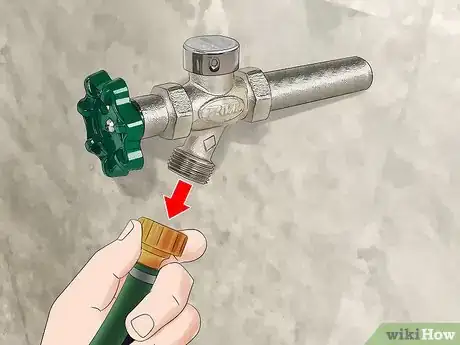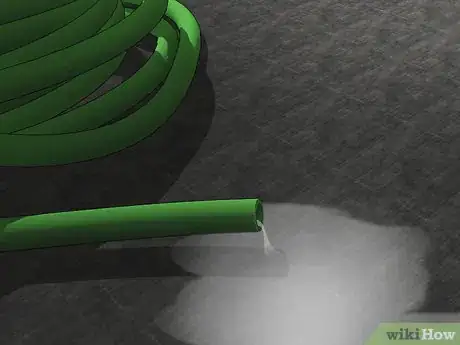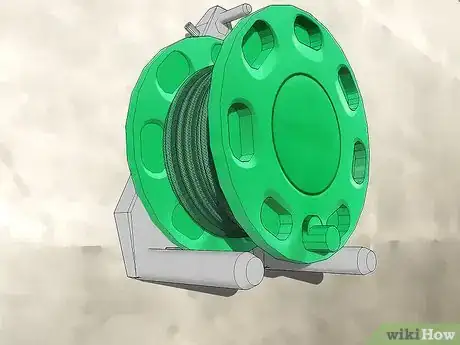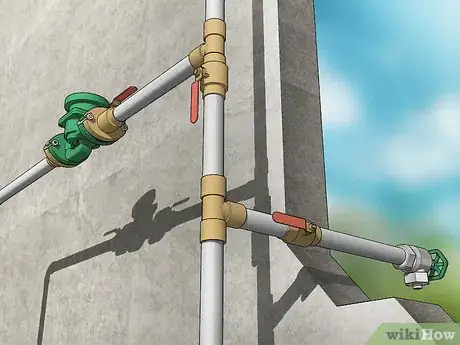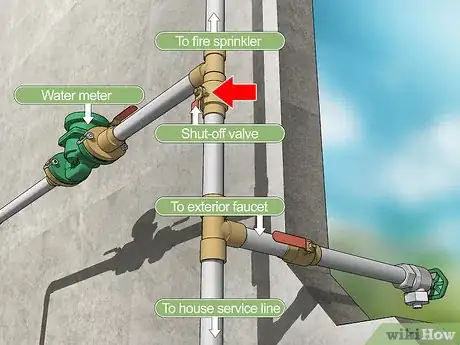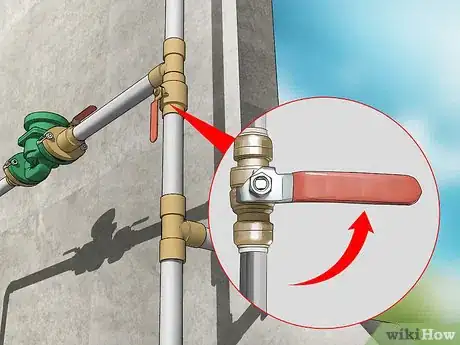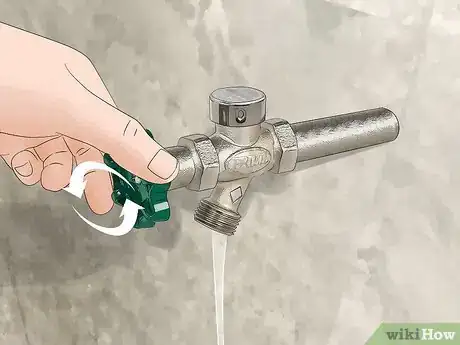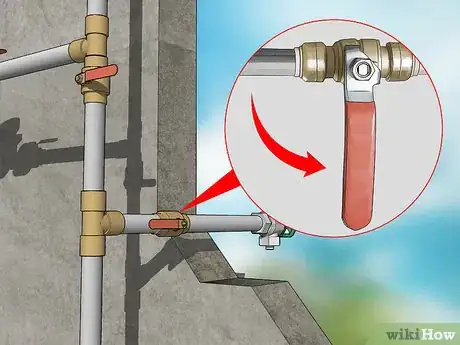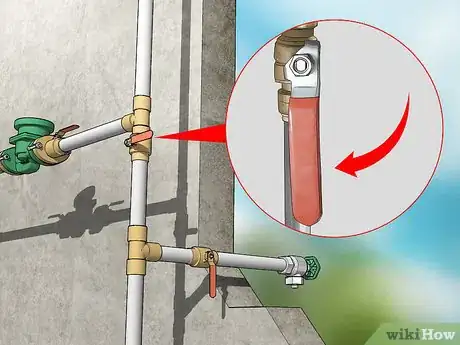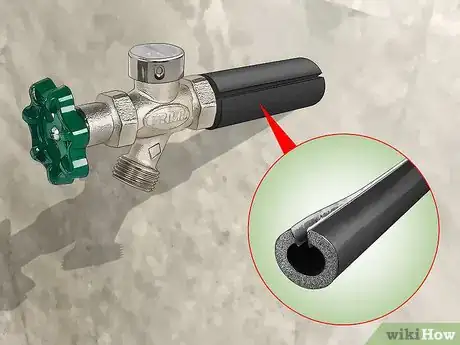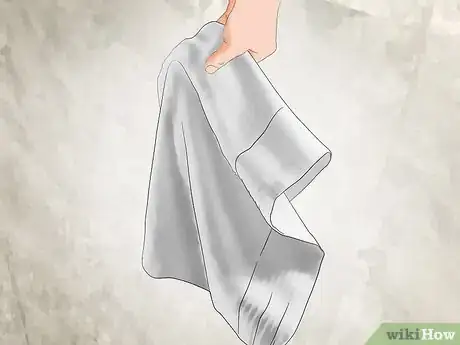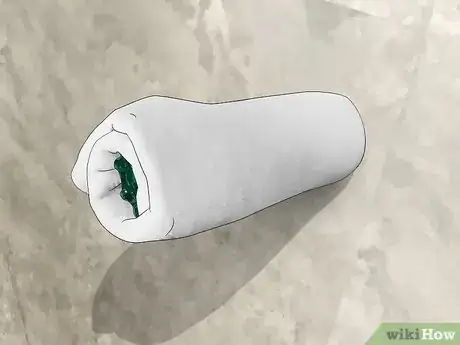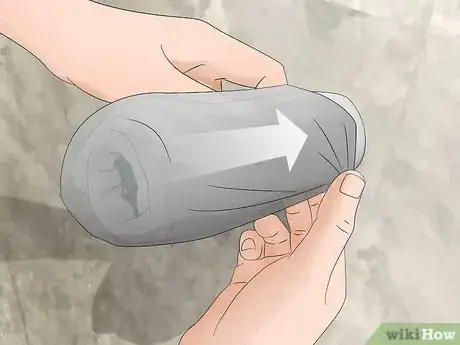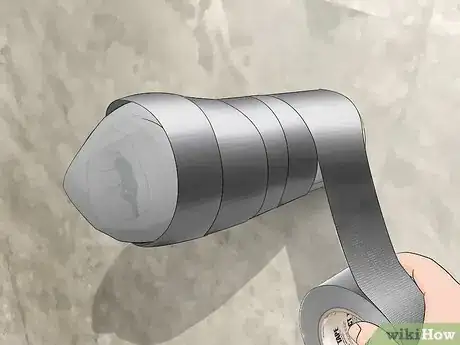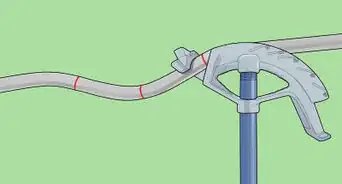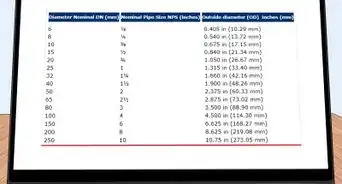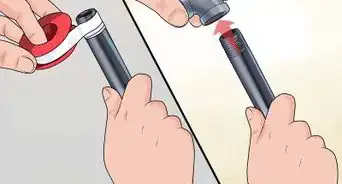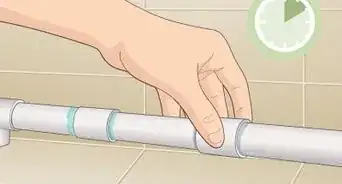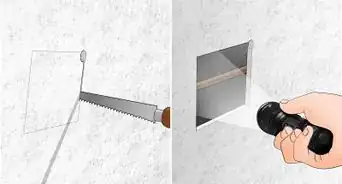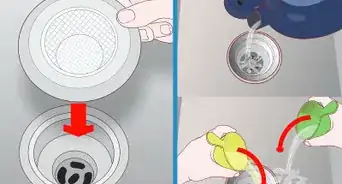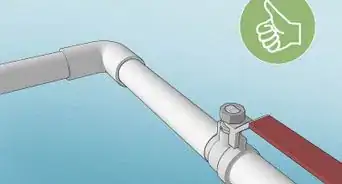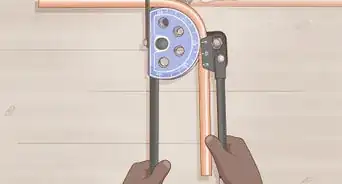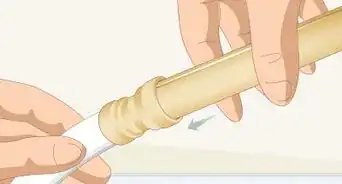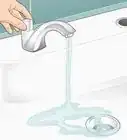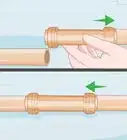This article was co-authored by Dave Jones. Dave Jones is a Professional Plumber and the Midwest Regional Vice President at Roto-Rooter Plumbing & Water Cleanup. In 1992, Jones joined Roto-Rooter as a drain service technician at the age of 18. Since then, he has risen through the ranks into positions of increasing authority. Dave served as general manager of Roto-Rooter’s Charlotte, North Carolina, and Atlanta, Georgia branches before being promoted to Contractor Area Manager and later to Regional Vice President. Dave holds Master Plumber Licenses in Pennsylvania, North Carolina, and Georgia.
This article has been viewed 58,916 times.
Exterior faucets can cause plenty of problems for your plumbing in the winter. When the cold weather moves in, water in faucets or in attached hoses can freeze and expand, which could lead to your pipes bursting. For maximum protection in the winter from this type of issue, you’ll need to disconnect hoses, turn off your water valve, and insulate your faucet. Start protecting your faucets in October or early November to be safe.
Steps
Disconnecting the Hose
-
1Detach the hose from the faucet. Leaving your hose attached to the faucet for the winter is asking for trouble. Doing this may lead to interior water lines freezing and bursting. Simply disconnect the hose from the faucet to reduce the likelihood of this occurring in your home.[1]
- To disconnect the hose, turn it to the left or counter-clockwise.
- Wriggle the hose forward and back to remove any debris that's clogging the spigot threads. Lightly tap the spigot with a hammer and spray it with WD-40. Wait a few minutes and use pliers to try and release the hose.
- You can also use a hair dryer or heat gun on the spigot to make the metal expand, which will make it easier to remove the hose.
-
2Drain your hoses. Water can lie dormant in hoses and when it freezes, it will expand and can cause damage to the material of your hose. Go to a part of your property with a slope and lay the hose along it.
- The water will drain out at the end of the hose and run down the slope.
Advertisement -
3Store your hoses for the winter. It is best to stock your hoses in your garage or in your shed for the winter, keeping them safe from damage from the elements. Curl them up and hang them somewhere in your garage.
- If you want to further protect your hoses, wrap them in insulation tubing. Simply pry open the long slit on the tubing and fit it over the hoses. Tape the slit shut for maximum protection. This will also protect the material from cold weather and possible damage.
Shutting off the Interior Valve
-
1Find the location of the valve in your home. This method should only be used to turn off the faucet before winter and should not be followed during the winter. Every house tends to have the interior valve located in a different place. Typically, you can find the interior valve in 1 of 3 places, depending on the design of your home:[2] [3]
- Basement: The valve is normally situated near the front foundation wall. It should be within 3–5 feet (0.91–1.52 m) of the location where the main water enters the basement.
- Crawl space with a basement: You can find the shut-off valve where the main water enters the basement in a crawl space in older homes.
- Crawl space with no basement: You should be able to find the valve near the water heater or beneath the kitchen sink.
-
2Identify the correct valve to close. If your home has a fire sprinkler system, you will need to exercise extra care when choosing the correct valve to shut-off. If your home does not have a fire sprinkler system, things are a little more straightforward.[4] [5]
- For homes with fire sprinklers and an inside main water meter, find the 2nd valve. It should be above the main water meter and “downstream” of the fire sprinkler tee.
- For homes with fire sprinklers and an outside main water meter, find the 2nd valve, which will also be “downstream” of the fire sprinkler tee.
- Homes with an outside water meter and no fire sprinklers will usually have one valve that has the capability of shutting off the water for the entire home.
-
3Close the valve. Some valves have round wheel handles which you can close by turning them clockwise or to the right. Other valves have level handles which you can close by using ¼ turns until the handle is no longer parallel to the pipe.[6] [7]
- Try and open faucets around the home after you’ve closed the main valve to check if you've successfully shut down the water supply.
- Open the faucet on the highest level of the home to relieve pressure.
-
4Open the outside faucet until it runs dry. Keep an eye on the outside faucet for a while after you’ve opened it. When water completely stops dripping from the faucet, it is fully drained.[8]
-
5Turn off the exterior faucet. In doing this, you will ensure that the exterior faucet has no dormant water sitting inside the sillcock or hose bib. You should double-check after to make sure that the outside faucet is not dripping any water.[9]
-
6Open the shut-off valve again. Now that your faucet is drained and is dry, you can open the shut-off valve again to restore water to the home. Make sure you turn off the exterior faucet and close the drain cap before doing this.[10]
- Simply turn the valve the opposite direction from when you closed it to re-open it.
Insulating the Faucet
-
1Wrap exposed pipes with insulation tubes. You can buy insulation tubes at your local hardware store. The tubes come with an opening slit along one side. Open this slit and place insulation tubes around all of your outside pipes.
- For extra protection, use duct tape to keep the slit tightly shut and to better protect the pipes from damage.
-
2Get an old piece of clothing or a towel. You can use any old piece of clothing like an old t-shirt or jumper that you no longer wear. Towels will work best but clothing items like t-shirts or jumpers will also do.
-
3Wrap your chosen fabric around the faucet. You might need to fold the t-shirt or jumper to make them sufficiently thick to keep the faucet protected. Make sure that you cover the entire faucet with the garment and wrap it around it as many times as you can and as tightly as possible.
- You can use another clothing item for extra safety. Simply wrap it around the first item. Check to make sure you've covered the whole faucet.
-
4Place a plastic bag over the fabric and faucet. Use a bag that will tightly fit around the fabric and faucet. Push the bag all the way into the wall to adequately protect your faucet from damage from all areas. Use a zip tie to seal the opening of the bag at the wall.
-
5Tape the bag. Use duct tape to tightly wrap and seal the plastic bag over the clothing. When finished, the tape should completely cover the bag. Test the security of the insulation by lightly pulling on the tape. If the bag and the garments come off after a light pull, you’ll need to start again and wrap them tighter.
Expert Q&A
-
QuestionHow do you insulate outdoor faucets?
 Dave JonesDave Jones is a Professional Plumber and the Midwest Regional Vice President at Roto-Rooter Plumbing & Water Cleanup. In 1992, Jones joined Roto-Rooter as a drain service technician at the age of 18. Since then, he has risen through the ranks into positions of increasing authority. Dave served as general manager of Roto-Rooter’s Charlotte, North Carolina, and Atlanta, Georgia branches before being promoted to Contractor Area Manager and later to Regional Vice President. Dave holds Master Plumber Licenses in Pennsylvania, North Carolina, and Georgia.
Dave JonesDave Jones is a Professional Plumber and the Midwest Regional Vice President at Roto-Rooter Plumbing & Water Cleanup. In 1992, Jones joined Roto-Rooter as a drain service technician at the age of 18. Since then, he has risen through the ranks into positions of increasing authority. Dave served as general manager of Roto-Rooter’s Charlotte, North Carolina, and Atlanta, Georgia branches before being promoted to Contractor Area Manager and later to Regional Vice President. Dave holds Master Plumber Licenses in Pennsylvania, North Carolina, and Georgia.
Master Plumber, Roto-Rooter Plumbing & Water Cleanup The easiest and most effective way to do it is to get a hose bib insulation kit. They're these little Styrofoam covers that cinch up tight against the side of your house. They're super solid when it comes to protecting your outdoor faucets from the cold.
The easiest and most effective way to do it is to get a hose bib insulation kit. They're these little Styrofoam covers that cinch up tight against the side of your house. They're super solid when it comes to protecting your outdoor faucets from the cold. -
QuestionWhere is the water supply line for my outdoor faucets?
 Dave JonesDave Jones is a Professional Plumber and the Midwest Regional Vice President at Roto-Rooter Plumbing & Water Cleanup. In 1992, Jones joined Roto-Rooter as a drain service technician at the age of 18. Since then, he has risen through the ranks into positions of increasing authority. Dave served as general manager of Roto-Rooter’s Charlotte, North Carolina, and Atlanta, Georgia branches before being promoted to Contractor Area Manager and later to Regional Vice President. Dave holds Master Plumber Licenses in Pennsylvania, North Carolina, and Georgia.
Dave JonesDave Jones is a Professional Plumber and the Midwest Regional Vice President at Roto-Rooter Plumbing & Water Cleanup. In 1992, Jones joined Roto-Rooter as a drain service technician at the age of 18. Since then, he has risen through the ranks into positions of increasing authority. Dave served as general manager of Roto-Rooter’s Charlotte, North Carolina, and Atlanta, Georgia branches before being promoted to Contractor Area Manager and later to Regional Vice President. Dave holds Master Plumber Licenses in Pennsylvania, North Carolina, and Georgia.
Master Plumber, Roto-Rooter Plumbing & Water Cleanup The water supply lines are typically located in the basement. If you don't see them, look in your closets for an access panel and open it.
The water supply lines are typically located in the basement. If you don't see them, look in your closets for an access panel and open it.
Things You'll Need
- Old clothes or a towel
- A plastic bag
- Duct tape
- WD-40
- Zip ties
- A bucket of water
- A hair dryer or heat gun
References
- ↑ http://aces.nmsu.edu/ces/yard/2006/120906.html
- ↑ https://www.wsscwater.com/customer-service/residential-tips/locating-and-operating-your-main.html
- ↑ Dave Jones. Master Plumber, Roto-Rooter Plumbing & Water Cleanup. Expert Interview. 29 March 2021.
- ↑ https://www.wsscwater.com/customer-service/residential-tips/locating-and-operating-your-main.html
- ↑ Dave Jones. Master Plumber, Roto-Rooter Plumbing & Water Cleanup. Expert Interview. 29 March 2021.
- ↑ https://www.wsscwater.com/customer-service/residential-tips/locating-and-operating-your-main.html
- ↑ Dave Jones. Master Plumber, Roto-Rooter Plumbing & Water Cleanup. Expert Interview. 29 March 2021.
- ↑ Dave Jones. Master Plumber, Roto-Rooter Plumbing & Water Cleanup. Expert Interview. 29 March 2021.
- ↑ https://www.wsscwater.com/customer-service/residential-tips/locating-and-operating-your-main.html
